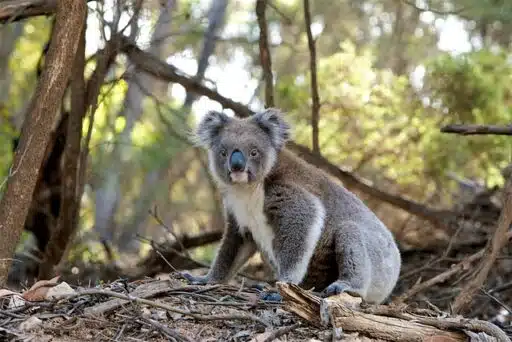Welcome to the Top 10 Most Endangered Animals in Australia. Jump right in!
Many of the animals in Australia cannot be found anywhere else on the planet, which is why it is especially alarming that so many are risking extinction. Therefore we have compiled a list of the most endangered animals in Australia for you to learn more about them before it’s too late.
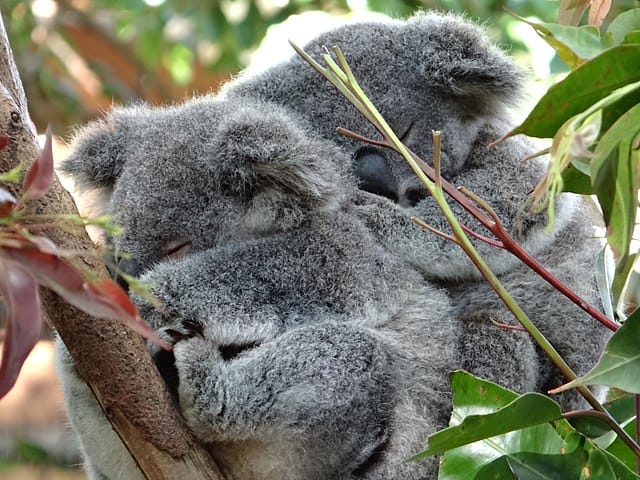
The populations and diversity of animals in Australia are vast. There’s a reason why the saying goes, “Ah, Australian animals. If it isn’t venomous, carnivorous, or has foot-long claws, it’s probably just a tourist”.
With the growing human population and the negative impact of human activities on the environment and nature, the number of animals is reducing rapidly. Most animals are entirely extinct, while others are critically endangered and must be cared for urgently.
Unfortunately, the most iconic animal in Australia, the Koala, is also included on the endangered animal list.
Let’s learn more about the endangered species of the country that is also a whole continent at the same time – Australia.
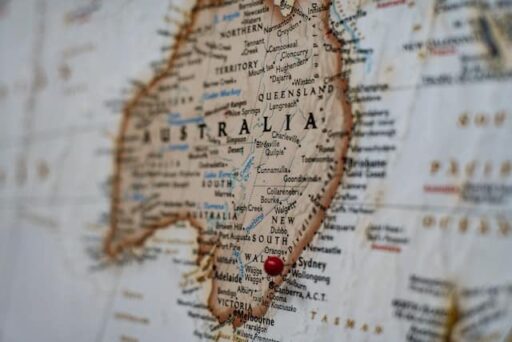
Read the entire article or jump to any section below.
Endangered Animals in Australia:
Endangered animals are those whose population is drastically reducing worldwide and nearing extinction due to various reasons such as habitat loss, hunting, deforestation, etc.
Following is the list of 10 the most endangered animals in Australia:
#1 Koala (Phascolarctos cinereus)
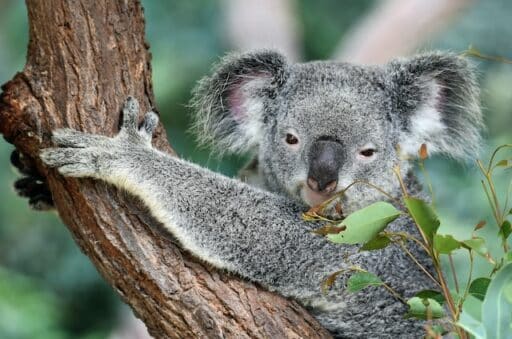
Koala is an iconic Australian animal native to the country and is the closest living member of wombats. In Australia, koalas are not limited to small regions; they can be seen in Victoria, New South Wales, Queensland, and Southern Australia. They dwell in the open eucalyptus woodland because the leaves of these trees are their ideal food.
They have a 60 to 85 cm long body, large fluffy ears, round head, no tail, a stout and spoon-shaped nose, and weigh around 4 to 15 kg. Due to this unique physical appearance, they are very easily recognizable.
Did you know that out of 24 hours, Koalas sleep up to 20 hours?
Worldwide the Koala is the symbol of Australia. But unfortunately, droughts, bushfires, kangaroo island fires, and habitat loss due to clearing land have all reduced the koala population.
Their population currently consists of 32,000 individuals – a considerable reduction from the 8 million measured three years ago, which is highly alarming. Many experts fear that the koalas will become extinct without suitable precautions shortly.
It requires vital planning to exclude them from Australia’s list of endangered animals.
As koalas spend most of their time on trees, planting more trees can significantly help make them a healthy population in Australia again.
#2 Mountain Pygmy-Possum (Burramys parvus)
It is another animal in Australia that is becoming endangered. Before the bushfires in 2019-2020, they were already at high risk. This specialized animal of Australia feeds specifically on the migratory Bogong moth and berries and seeds.
The Mountain Pygmy-possum has a cream-colored stomach, while the rest of its body is covered with a thick coat of gray fur. The total length of its body and head is 11cm, and its tail length is even longer than this.
Climate change is the main reason for its population reduction. Mountain Pygmy-possums are only native to the snowy mountain tops in New South Wales and Victoria. Due to their cold climate, they hibernate for up to 7 months a year, making them marsupial animals. The nests they hibernate in are situated 2-4 meters under the snow.
With the increasing temperature, the length of winter is shortened, and the snow doesn’t stay for more extended periods over the mountains. This greatly disturbs the food foraging activities and hibernation period of the Mountain Pygmy-possum.
Sadly, only 2,000 individuals of Burramys remain in the world, and it only occurs in Mt Kosciuszko in New South Wales and Southern Victoria.
Fact: Mountain Pygmy-possum is Australia’s only mammal restricted to alpine habitat.
#3 Silver-Headed Antechinus (Antechinus argentus)
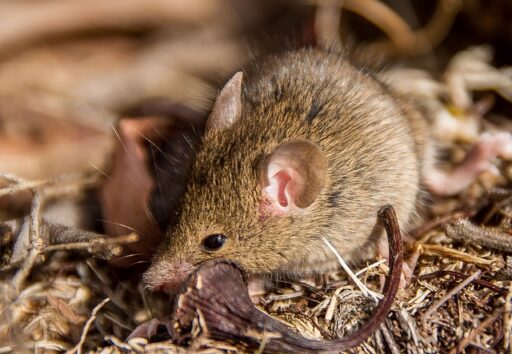
Silver-headed Antechinus, also called suicidal reproducers, suffered a severe fall in their population. In 2013 environmentalists discovered that they nest in the wet eucalypt and rainforests of central Queensland.
In the high vegetation of the forest floor, this animal feeds on beetles, bugs, cockroaches, and spiders. Their population shrunk exponentially when fire attacked significant parts of these forests, destroying their homes. Moreover, they suffered adversely due to a lack of food.
This meat-eater inhabits hollow trees of all kinds in woodlands, forests, and rainforests.
According to a recent report, only 2,500 individuals of Silver-headed Antechinus remain.
The population of this marsupial in Australia is not only reducing due to predation, habitat destruction, and fire. Scientists also observe that males have ample testosterone supply. Because of this overburdening of their body, the males die at the end of their mating, yet another reason for their downfall.
Conserving this petite and adorable animal is essential; otherwise, it will soon become extinct.
#4 Greater Glider
Greater gliders are giant gliding marsupials native to eastern Australia. They are primarily herbivores and inhabit the eucalypt forests from Queensland, Mossman, to Victoria Daylesford.
This animal has a soft tail and ears and prefers traveling in the topmost parts of the thick forests. This is considered a giant gliding possum with a body and a head length of 350 to 450mm. The thick fur on their body makes them appear more extensive than they are.
The main reasons for their vulnerability are habitat loss, logging, and bushfires. In the past 20 years, the great glider lost 80% of its total population.
Population management and conservation are urgently required to recover and improve their declining population.
#5 Numbat (Myrmecobius fasciatus)
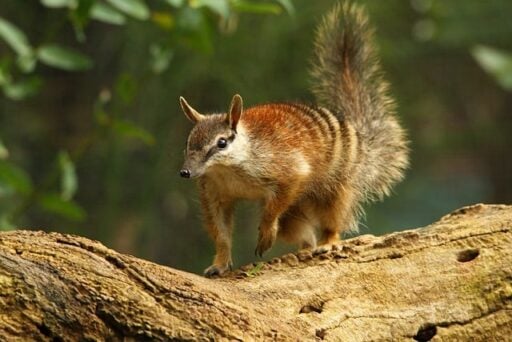
The Numbat also goes by the name Walpurti or noombat. It is diurnal and eats up to 20,000 termites every day. This insectivorous marsupial used to inhabit southern Australia, but now it is confined to a few small colonies in western Australia.
These tiny to medium-sized marsupials spend their night in hollow burrows or logs to protect themselves from predators such as foxes and feral cats.
Numbats have a 10 to 11cm slender long sticky tongue that allows them to eat ants and other termites. Its long nose also assists it in finding food in logs and on the ground.
In Western Australia, it is a faunal emblem. Its primary threats pertain to habitat loss, clearing, and predation. For these reasons, it has become an endangered animal in Australia.
Fewer than 800 Numbats remain; it only occurs organically in western Australia’s southeastern part.
In South Australia and new south wales, new populations of numbats have been introduced artificially to conserve it and prevent further numbat population loss.
There are also plans to reintroduce the numbats in semi-fenced and managed areas of the southern Yorke Peninsula in South Australia.
#6 Smoky Mouse (Pseudomys fumeus)
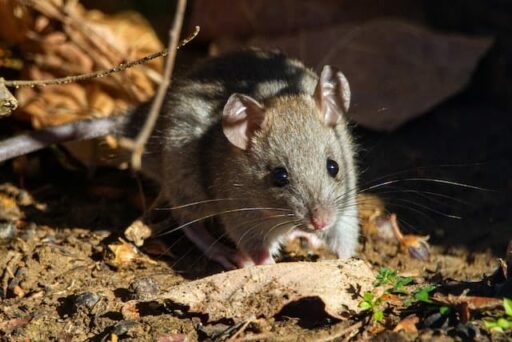
This rodent species, the smoky mouse, exists in southeastern Australia. It s a gray-furred mouse that is quite prominent in size. Its distinctive features are its gray-pink ears, light pink feet, and a tail more considerable than its body.
In the wild, the number of smoky mice is decreasing and thus regarded as vulnerable. It typically lives in the far southeastern New South Wales and the Grampians, East Gippsland. The smoky mouse is entirely extinct from the Brindabella Ranges and Otway Ranges.
Bushfires in 2019-2020 resulted in significant smoke, which killed a large group of smoky mice because they developed severe lung disease. The smoky mouse was reportedly the first species to die due to inhalation of smoke.
The main threats to smoky mice are increasing predators and habitat loss.
Smoky mice’s presence in the forest is vital because they keep the forest healthy by increasing water penetration, aerating the soil, and distributing the spores of the truffles in their stools.
In the southeast forest, merely 100 smoky mice prevail, much less than the average population in this region in the past years.
Small mammals are increasingly becoming extinct in Australia, and their conservation is urgently required.
#7 Woylie (Bettongia penicillata)
Woylie is a critically endangered animal, also called brush-tailed bettong. Thi small gerbil-like mammal lives in the shrublands and forests of Australia. The Woylie is also a marsupial and has two subspecies.
It has a darkly colored tail with a differentiating black brush at its end. Gra ish brown fur covers the Woylie’s upper body, while its underside is a pale gray.
The most common causes of Woylie deaths are habitat loss and predation. Bru h-tailed bettong is now confined to two small regions in Australia, whereas previously, it existed in 60% of Australia’s mainland in the 19th century.
In Tutanning, Dryandra, Greater Kingston, and Peru, less than 2,000 individuals of Woylie remain at present.
They became critically endangered due to high competition with rabbits for food, and certain diseases also reduced their population.
Woylies are essential because they play a crucial role in the re-establishment and health of native vegetation by dispersing the fungal spores throughout the forest in their droppings. Thu for the presence of fungi in woods, Woylie is vital.
If we lose this animal forever, its surroundings will suffer severe and long-term effects.
#8 Long-Footed Potoroo (Potorous longipes)
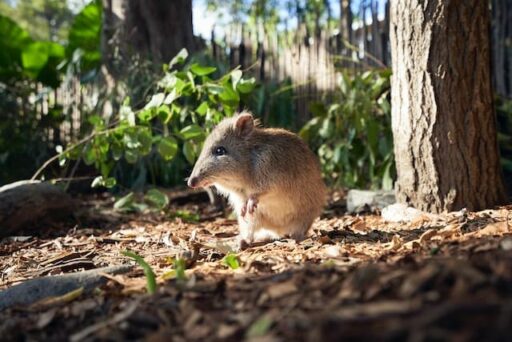
Another small marsupial native to southeastern Australia is the Long-footed Potoroo. It s also in a very vulnerable position.
Long-footed Potoroo’s population is reducing due to logging and predation. Thi shy marsupial has less than 1,000 to 2,000 individuals remaining.
It has a 32 cm long tail and 40cm long body; females weigh around 1.7 kg while males weigh about 2.2 kg.
It lives on the border between New South Wales and southeast Victoria while frequently occurring in East Gippsland.
The 2019-2020 bushfires also affected this animal badly, destroying up to 82% of its natural territory. Oth r threats to Long-footed Potoroo faces are timbering, habitat destruction, and predators.
Pigs are great competitors of the Long-footed Potoroo as they feed on the same things.
Long-footed potoroos are essential because they establish plant life by dispersing the fungi spores in their stool throughout the forests. It shows that they are crucial in recovering burnt regions.
It is an endangered animal in New South Wales and Victoria and is on the International Union for Conservation of Nature (IUCN) list.
Specific small steps are taken to protect them from becoming extinct. Con ervation plans include reducing forest burning and continuously monitoring logging to increase their population in the coming years.
#9 Northern Hairy-Nosed Wombat (Lasiorhinus krefftii)
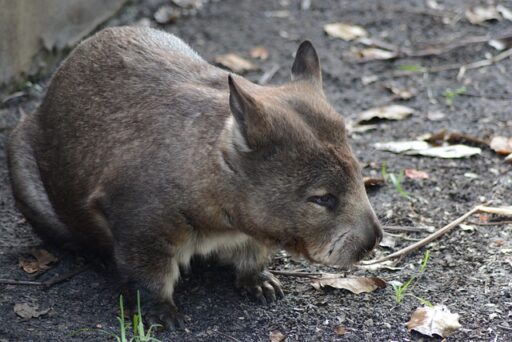
Yomonon is another common name for the northern hairy-nosed wombat, another Australian and critically endangered animal.
Soft gray fur covers its body; they have a broad muzzle and long, pointed ears. The thi animal grows about 1.3m in length and weighs around 36 kg. The r eyes are small, and their head is blunt and large with tiny muscular necks.
Northern hairy-nosed wombats are excellent diggers because they have powerful stubby legs and sharp claws.
Fact: Northern hairy-nosed wombat is the rarest land mammal in the world.
In the past 100 years, it occurred in Queensland, Victoria, and New South Wales. At resent, it only exists in the Queensland Epping Forest National Park.
Wild dogs and loss of natural territory due to floods are the most pressing concerns facing the northern hairy-nosed wombat, although many other factors exist.
Estimations in 2003 predicted their population only to contain 130 individuals. Tha kfully, this number increased, and according to a report from 2021, their population now has 300 living individuals and continues to grow. Thi is hugely celebrated amongst conservationists.
#10 Kangaroo Island Dunnart (Sminthopsis Aitken)
The Kangaroo Island dunnart is a dark sooty gray-colored animal in Australia. The thi dimorphic animal has larger males as compared to females.
They have a tail as long as their body, sharp teeth, big ears, and pure black eyes.
The IUCN (International Union for Conservation of Nature) includes them in the critically endangered species list.
The Kangaroo Island dunnart population before 2019-2020 contained about 500 individuals. Aft r the bushfires, however, it reduced and now only consists of 50 individuals.
This nocturnal animal eats invertebrates, primarily spiders, beetles, scorpions, grasshoppers, and ants. It inhibits the six Ravine des Casoars Wilderness Protection Area sites or Flinders Chase National Park.
The main risk the Kangaroo Island dunnart faces is clearing natural habitat vegetation. Wil fires and feral cats also threaten this endangered Australian animal.
Recently conservationists tried to locate this endangered animal in the eastern part but failed.
Australian wildlife conservancy works with conservation organizations and local landholders to protect one of the Kangaroo Island dunnart’s surviving populations.
Fact Check: Sminthopsis Aitken has scent glands; therefore, it has the capabilities of olfactory communication.
Animals Extinction Rate In Australia
The extinction rate of animals and other living organisms is rapidly increasing throughout Australia, which is alarming and requires immediate response and planning to save the animals from becoming wholly removed from the planet.
The bushfires in 2019-2020 badly affected up to 3 million animals and reduced their population significantly.
The following are a few steps by which we can conserve more living organisms and make the world more environment-friendly:
- Growing native species
- Reducing deforestation
- Banning the hunting of species that are already less in number
- Increasing the number of forests
- Playing a role in keeping the climate appropriate for every species
- Adopting animals
- Learning about endangered species
- Avoid using harmful chemicals
- Avoid destroying the natural territory of wildlife
Last Words for the most endangered animals in Australia
Australia is a land of outbacks, wide open spaces, deserts, beaches, natural wonders, thick forests, and much more. It causes many animals, but with the increasing number of forest fires, human activities, and climate change, most animals are dying in large numbers; hence their population is reducing, and such animals are near extinction.
Koalas, Mountain Pygmy-possums, and greater gliders are among Australia’s most endangered animals.
Unique conservation plans are required to protect and increase the population of endangered animals; otherwise, not only will these animals become only part of history, but humans and the natural environment will suffer equally due to the loss of essential actors on our planet.
Thank you for reading this article! If you enjoyed this, you would also like our piece on The Most Endangered Animals Due to Human Activity. Or Jacked Kangaroos.
Join our Forum for free today!


